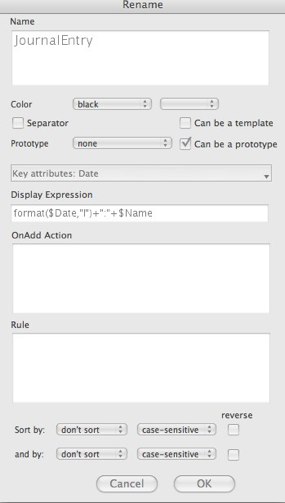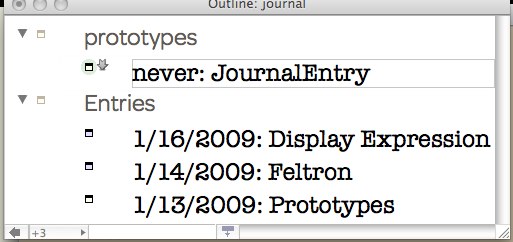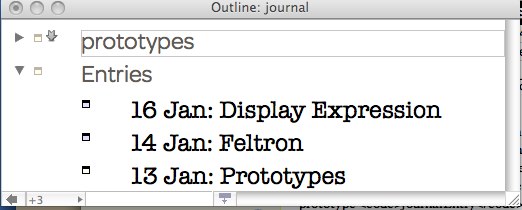
enjoying new media • software aesthetics
Display Expression

Printed journals, planners, and diaries sometimes come with elaborate pre-printed forms. Indeed, sites like DIYPlanner and David Seah’s Printable CEO give you customizable templates for printing your own elaborate forms. These serve two purposes:
- They remind you of things you want to record
- They save time by pre-printing information, such as dates, that can be printed in advance
We can get some of these advantages in Tinderbox, too. For example, we can add Key Attributes to remind us of things we want to record, and we can automatically set attributes (like the Prototype attribute discussed earlier this week) when we know what their likely values will be.
The attribute DisplayExpression is the Tinderbox equivalent of a running header; it lets us change the way Tinderbox displays the names of our notes. Normally, when Tinderbox draws a note, it simply takes the name from the attribute Name . But we can change this, and make it better. For example, let’s set the DisplayExpression of our prototype JournalEntry to:
format($Date,"l")+": "+$Name)Now, every journal entry will inherit the display expression, and we'll see the timestamp before each title.

Perhaps we don't need to be reminded so often that it’s 2009; we can change the date format from "l" (local, short format) to "D M", giving us just the day and month

serious hypertext
Tekka, 134 Main Street, Watertown MA 02472 USA. email: editor@tekka.net info@tekka.net voice: +1 (617) 924-9044 (800) 562-1638
© Copyright 2009 by Eastgate Systems, Inc. All Rights Reserved